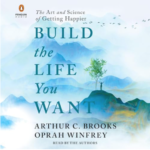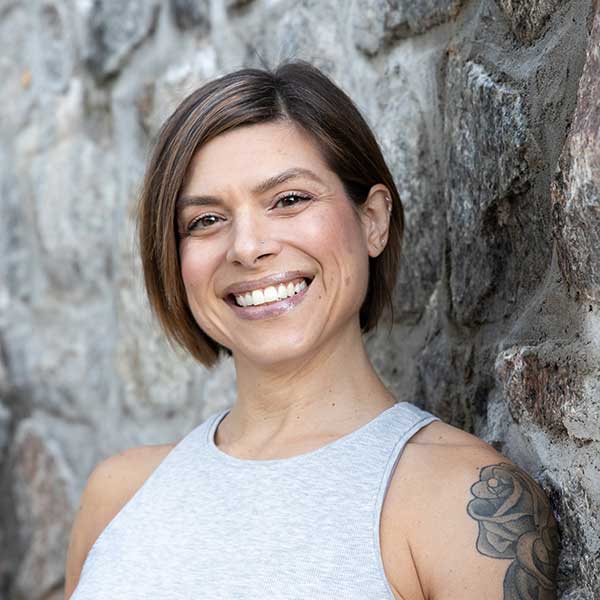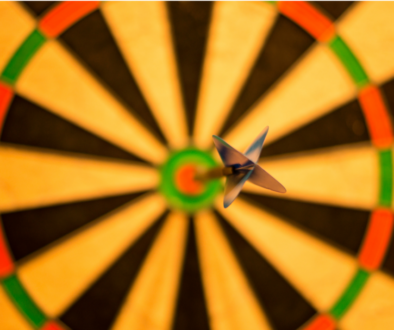Build the Life You Want (with Arthur Brooks and Yoga)
 I’m doing a little something different with this blog post: I’m sharing my book report for my Yoga Therapy program. The assignment was to summarize a book not already assigned that was helpful in our practice or would be helpful with clients. I choose Build the Life You Want and compared the techniques and advice to Yogic teachings and philosophy. I hope you enjoy and that you become a happiness warrior!
I’m doing a little something different with this blog post: I’m sharing my book report for my Yoga Therapy program. The assignment was to summarize a book not already assigned that was helpful in our practice or would be helpful with clients. I choose Build the Life You Want and compared the techniques and advice to Yogic teachings and philosophy. I hope you enjoy and that you become a happiness warrior!
In this age of technology that allows us to connect instantaneously at the touch of a button, we are all lonelier and more disconnected than ever before. Many of us lack purpose, happiness, and connection. To help combat this loneliness epidemic, Arthur C. Brooks and Oprah Winfrey teamed up to write Build the Life You Want: The Art and Science of Getting Happier. This is an evidence-based guide to happier-ness (as Oprah calls it). In it, Brooks outlines the tools of Emotional Self-Management and the Four Pillars of Happiness to help us build the life we want. Students of Yogic philosophy will recognize parallels between Brooks’ strategies and many Yogic teachings including the Koshas, Kleshas, Yamas and Niyamas, Chakras, Purusharthas, and Patanjali’s Sutras
Build the Life You Want opens with a discussion about what happiness is and isn’t, individual happiness setpoints, and the factors (or macronutrients) of happiness. Brooks next outlines Emotional Self-Management tools as the foundation for a happy life. And on that foundation, he says, we build The 4 Pillars of Happiness. Throughout his discussion, we see that Yoga has similar lessons for us in our pursuit of living a better life.
Brooks starts by referencing Epicurious’ and Epictetus’ definitions of happiness. In Epicurean philosophy, a happy life requires freedom from mental disturbances and absence of physical pain. This aligns with Patanjali’s second sutra, “Yoga is the cession of the fluctuations of the mind.” Epictetus, in contrast, believed that happiness came from finding one’s purpose, behaving morally, hard work, and sacrifice. His philosophy is similar to Yogic teachings of Dharma and the Yamas and Niyamas, the ethical practices of Yoga including Tapas.
Our goal of maximizing happiness doesn’t require eliminating unhappiness. Brooks clarifies that happiness and unhappiness can, and do, coexist. While not Yogic, the concept and symbol of Yin and Yang illustrates that we can’t have one without the other and they are each contained within one another. He says these two seemingly opposing states co-exist in different ratios in each of us depending on our natural happiness setpoint. Just as we each have our individual blend of the Doshas, we also have our own happiness setpoint. Brooks shares this framework: Mad Scientist (high positive and high negative emotions), a Judge (low positive and low negative emotions), a Cheerleader (high positive and low negative emotions), or a Poet (low positive and high negative emotions). Similar to the Doshas, the purpose is to know setpoint, embrace our strengths, and use course-correcting tools and strategies when feeling out of balance.
Yoga and happiness are both misunderstood in some respects. Oftentimes it is assumed that Yoga is simply the physical practice of Asana just as positive emotions are mistaken for happiness. Brooks likens emotions to the aroma of dinner. The smell of the food is part of the experience of eating, but the aroma isn’t the most satisfying part. Happy emotions, like Asana, aren’t what really matters. If we get distracted by the physical practice or by fleeting pleasant states, we are experiencing Avidya. Lastly, happiness is not a final destination we’re working toward. Which is good news because that means we can all work on getting happier and we’ll never miss the mark. Likewise, we as Yoga teachers, remind students that Yoga is a journey, not a destination.
If happiness isn’t an emotion and it’s not the absence of unhappiness, what is it? As a nutrition coach, I appreciate Brooks’ analogy of the three macronutrients of happiness: enjoyment, satisfaction, and purpose. Enjoyment corresponds to the concept of Kama. He explains it’s more than momentary pleasure. It requires communion with others and consciousness. Satisfaction is the pride that comes from work and sacrifice. He says never settle for momentary pleasure or for a life of leisure. As we choose the difficult over the easy path, or Samskaras, this is the practice of Tapas. Purpose is our “why,” which corresponds to Dharma, or duty.
The first step toward experiencing these happiness macronutrients in our life is to manage our emotions. Brooks’ three tools of emotional self-management are metacognition, choosing a better emotion, and becoming less self-focused. Once we have this foundation, we then build upon it the four pillars of happiness: family, friends, meaningful work, and spirituality. We see a similar hierarchy in sister-sciences Ayurveda and Yoga: The ancient texts teach that Ayurveda prepares the practitioner physically and emotionally for the higher spiritual practices of Yoga. The eight limbs of Ashtanga Yoga begin with the ethical practices of the Yamas and Niyamas progressing to Samadhi, or Nirvana. The Chakras and the Koshas move from gross to subtle. Brooks’ tools are:
- Metacognition is the domain of the Vijnanamaya Kosha and Ajna Chakra. We must move emotion out of the limbic brain and into the more evolved pre-frontal cortex. We do this by pausing before reacting. We know that meditation, or Dhyana, the seventh limb, helps us to create the space to pause. He also suggests journaling one month after a negative experience on what we learned and again six months later on the good that came from that experience. This is Svadhyaya or self-reflection.
- Choosing a better emotion is simply acting the way we want to feel. Brooks highlights four emotions to cultivate: gratitude, humor, hope, and compassion. Gratitude is in our heart or Anahata Chakra and is part of Santosha, or contentment. This is a state that exists independent of life circumstances. When it comes to humor, he says consuming it is more beneficial than creating it. Brooks’ discussion on hope resonated with me the most. He explained that the opposite of pessimism is not optimism, it’s hope. Optimism is a belief that assumes everything will eventually be okay, which inherently suggests that what we do doesn’t matter. There is no agency. Hope, on the other hand, is a confidence that our actions matter and that what we do makes a difference in our lives, in the lives of others, and in the world. Hope and agency come from a healthy Manipura Chakra. This also connects to Dharma, duty; ahimsa, non-harming including the obligation to stop harm to self or others; and Tapas, doing the difficult work. Lastly, Brooks advices turning empathy into compassion. Empathy seems helpful, but it’s not beneficial to the person suffering or to the observer. Better for both is compassion or the desire to relieve suffering, both ours and others. This is ahimsa in action, again with Anahata and Manipura Chakras.
- Becoming less self-focused is caring less about others think of us and becoming less self-referential. Instead, strengthen social connections, let go of judgements, and spend more time seeking experiences of awe. Brooks warns here that social media can lead either to benign envy, which is an admiration that leads to self-improvement, or to malicious envy, hostile thoughts and a resentful longing for what others have. Malicious envy is one way social media decreases mental health. This where Kleshas like Avidya, Asmita, and Raga will be revealed to us. Social medial gives us a false sense of everyone else’s reality, a false sense of self as we portray our one-dimensional best or filtered self, and where our attachments run wild. We can, however, use social media while practicing Ahimsa, non-harming, in our comments and postings; Satya, truthfulness, which goes a step further than honesty; and Aparigraha, non-attachment. Maybe we even ditch social media and connect with Anandamaya Kosha, our bliss, through connection with others and awe-inspiring nature, allow us to progress up to the Sahasrara or Crown Chakra.
Once our emotional self-management foundation is set, we can build the four pillars of happiness: family, friendship, work, and faith. Brooks shares challenges and strategies for each.
- Dealing with difficulties in families requires acceptance, letting go of expectations, protecting our own well-being first, communication, forgiveness, and honesty. Family relationships are an area to practice Aparigraha, non-attachment; Santosha, contentment; Ahimsa, non-harming to others and self; Satya, speaking our truth; and recognizing Dvesha, avoiding unpleasant experiences. We’ll need healthy Vishuddha, Throat; Anahata, Heart; and Manipura, Solar Plexus Chakras for navigating conflicts.
- Friendship accounts for 60% of happiness. Introverts can learn from extroverts to share more of themselves with people while extroverts can learn from introverts how to deepen relationships with just a few close friends. Our partner/spouse should be our closest friend, but not our only friend. Contrary to what we might believe, friendship takes work, or tapas. Don’t let disagreements or different political or religious viewpoints ruin friendships. Here Brooks himself references the Buddhist principle of Samudaya, attachment is the root of suffering. Just as in family interactions, building the pillar of friendship requires Aparigraha, Ahimsa, and healthy Vishuddha, Anahata, and Manipura Chakras.
- Meaningful work and job satisfaction lead to life satisfaction. Good pay and benefits as well as doing fulfilling, intrinsically rewarding work are crucial. This is Artha, wealth and career, one of the Purusharthas, or objectives of life. Brooks warns about slipping into workaholism. Even meaningful work can be self-medicating. Loosing perspective on what really matters is Avidya, or ignorance. If our primary identity is our work title, this is Asmita, over-identifying with the ego or image. The advice given by Brooks is to have an identity and a circle of friends outside of work and to “treat your walks, prayer time, and gym sessions as if they were meetings with the president.” Here he’s advising to protect our Dinacharya, daily routine; and implying physical health has a role in The physical body is the Annamaya Kosha.
- Scientific-minded individuals may be skeptical of spirituality. However, research finds that transcendental beliefs and experiences contribute to happiness. Spirituality, Ishvara Pranidhana, takes the focus off the self, makes us kinder and more generous, helps us to stop ruminating, and helps us find purpose and meaning. Belonging to a spiritual community reduces feelings of isolation and improves mental health. Having a spiritual life protects against depression and aids in recovery from physical ailments and illness. Mystical experiences are linked with healing theta brain waves. Books advices to start with mindfulness, Pratyahara and Dharana to learn to focus the monkey-mind. When we are able to stay present, research finds we will experience less depression and anxiety, improve memory, and decrease back pain. The catch is that the spiritual life brings greater happiness so long as that’s not the goal, Aparigraha. Embark on this path to learn the truth, banishing Avidya, and to do good for others, Karma Yoga, and happiness will follow, Moksha. Brooks suggests starting small, perhaps reading a book, Jnana Yoga; and having discipline and consistency, Tapas.
The book concludes with an invitation to become a happiness warrior and pass on what we’ve learned. In doing so, not only do we solidify our own knowledge, but we also help the world fulfill its need for more happiness and combat the epidemic of loneliness we’re all experiencing. I found this book practical and inspiring. Intertwining Brooks’ evidence-based advice with my understanding of Yoga teachings in this summary has reaffirmed my commitment to living these principles and sharing them in an accessible way with others. I will conclude with my own call to action: become a happiness guru!
This post contains affiliate links.



